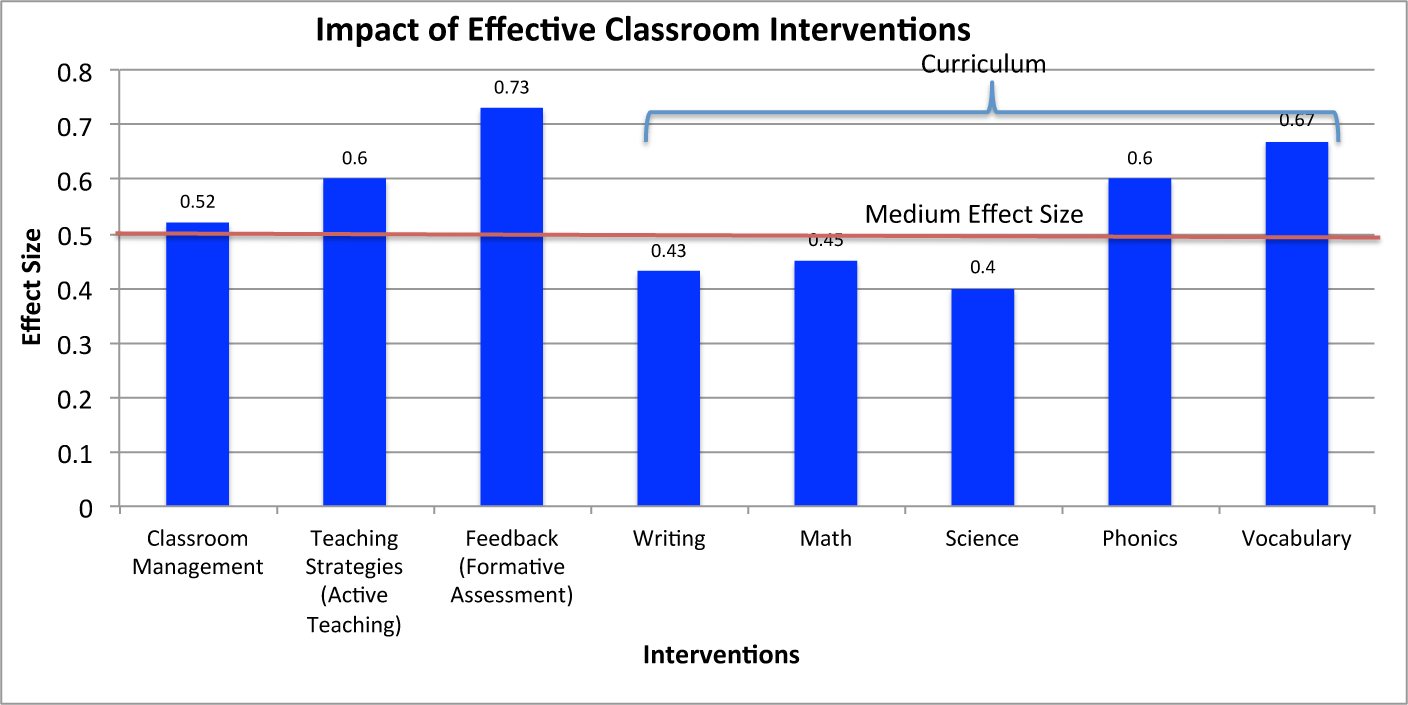What Practices Make a Difference in the Classroom?
Why is this question important? During the past 40 years significant attention has been paid to improving student performance. In the United States billions of dollars have been spent on school reform efforts designed to improve student test scores through structural interventions such as class size reduction, school size reduction, charter schools, school vouchers, and accountability through high-stakes testing. Unfortunately, the results have been disappointing, as test score remain virtually flat. The question should be asked, have we been focusing on the wrong types of interventions? Might interventions designed to improve classroom instruction provide better results?
See further discussion below.

Source(s): Visible Learning: A Synthesis of Over 800 Meta-Analyses Relating to Achievement, 2009
Result(s): This book provides data strongly suggesting that effective practices currently available are capable of making significant differences in student achievement. The chart above shows four areas that had medium effect size impacts on student success: classroom management, Teaching strategies (active learning), Feedback (formative assessment), and well-designed curricula (writing, math, science, phonics, and vocabulary). Not surprisingly, these areas closely correspond to what is already known about the skills teachers require to be effective at their jobs.
Implication(s): Focusing school reform on proven practices that achieve results will increase the likelihood of meeting the goals established in No Child Left Behind and, at the same time, save money. To accomplish these goals, it is important that teacher preparation programs be held accountable for preparing teachers to implement classroom interventions backed up by rigorous research.
Author(s): John Hattie
Publisher(s): Routledge
Study Description: The book is a synthesis of over 800 meta-analyses that provide data on the effects of educational interventions on student achievement and is also based on a review of over 50,000 individual studies. It does not include qualitative studies, but instead relies on quantitative research and makes use of effect size to communicate the power of interventions identified in the meta-analyses.
Definition(s): Effect size: A standardized measure of the effect of an intervention on an outcome. The effect size represents the change (measured in standard deviations) in an average outcome that can be expected if that person is given the treatment. Because effect sizes are standardized, they can be compared across studies.
Citation: Hattie, J. (2009). Visible Learning: A Synthesis of Over 800 Meta-Analyses Relating to Achievement, London and New York, Routledge
